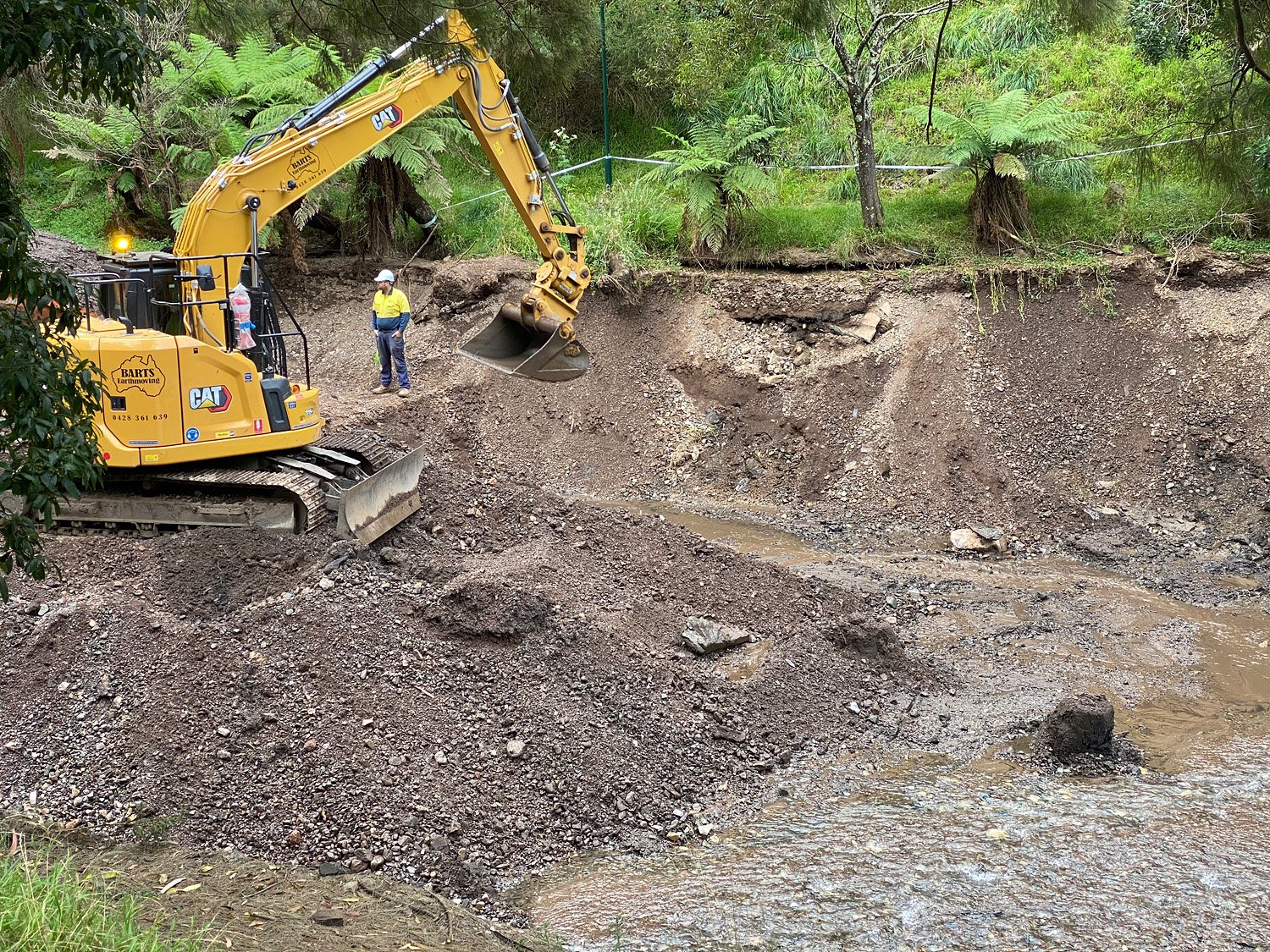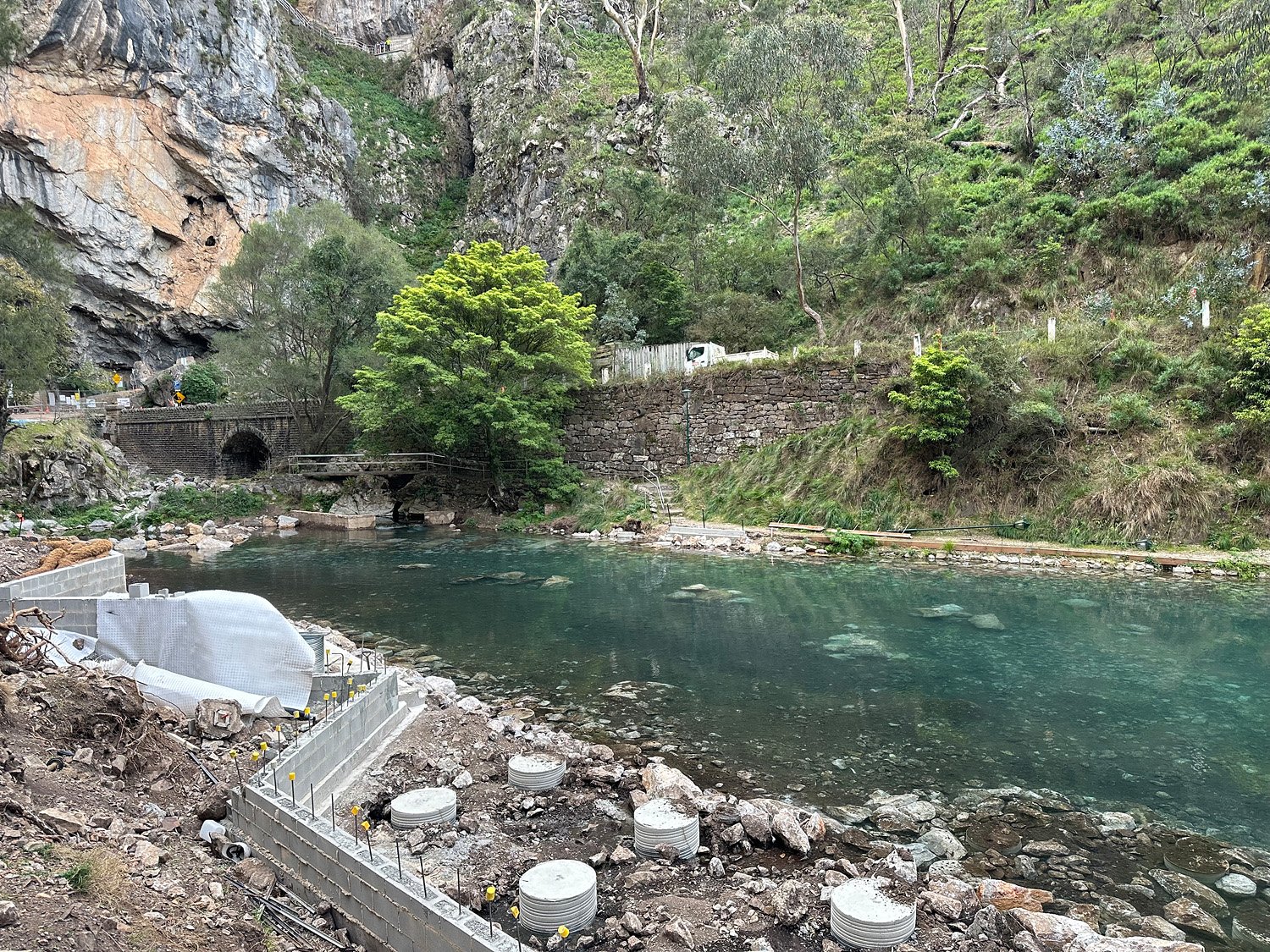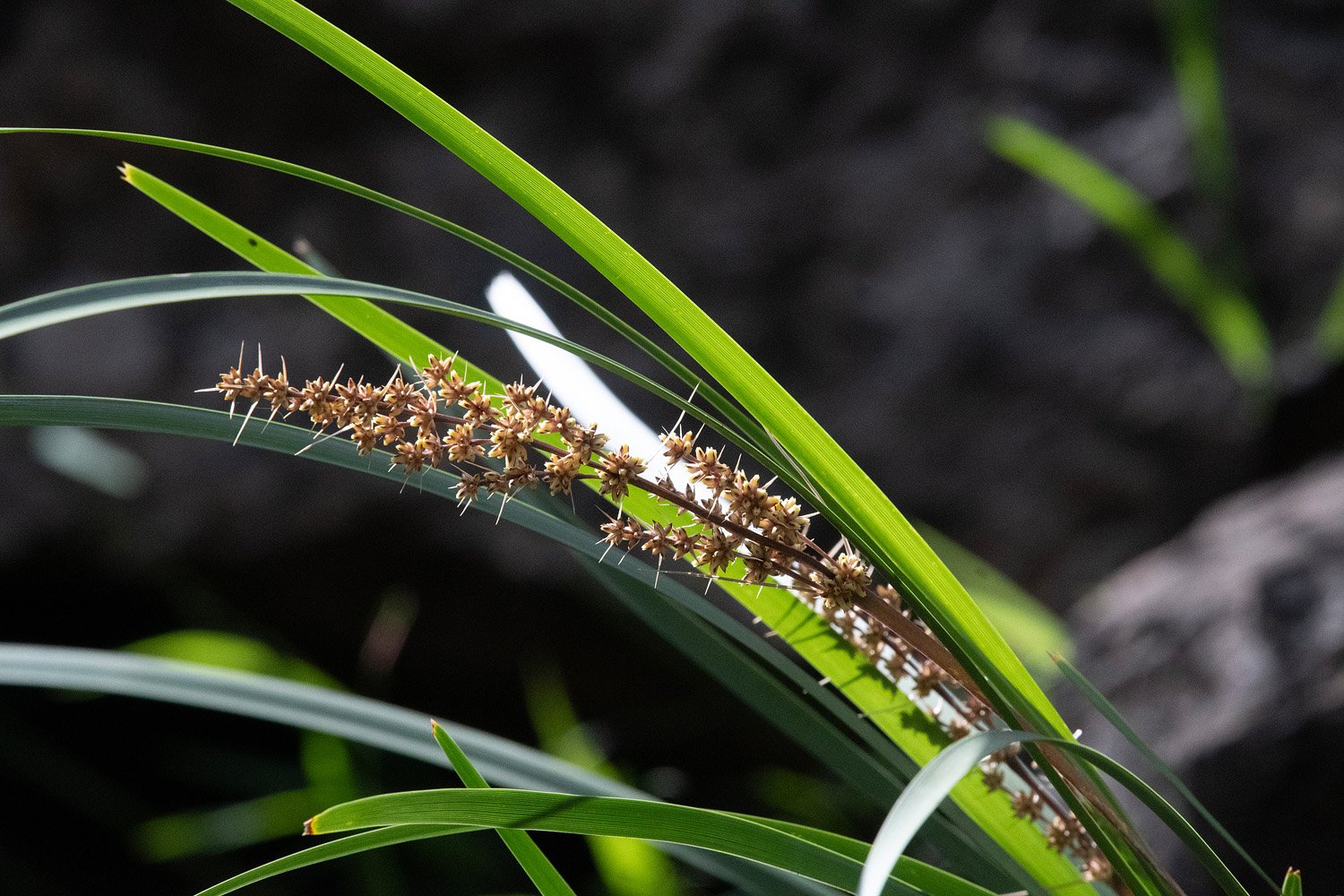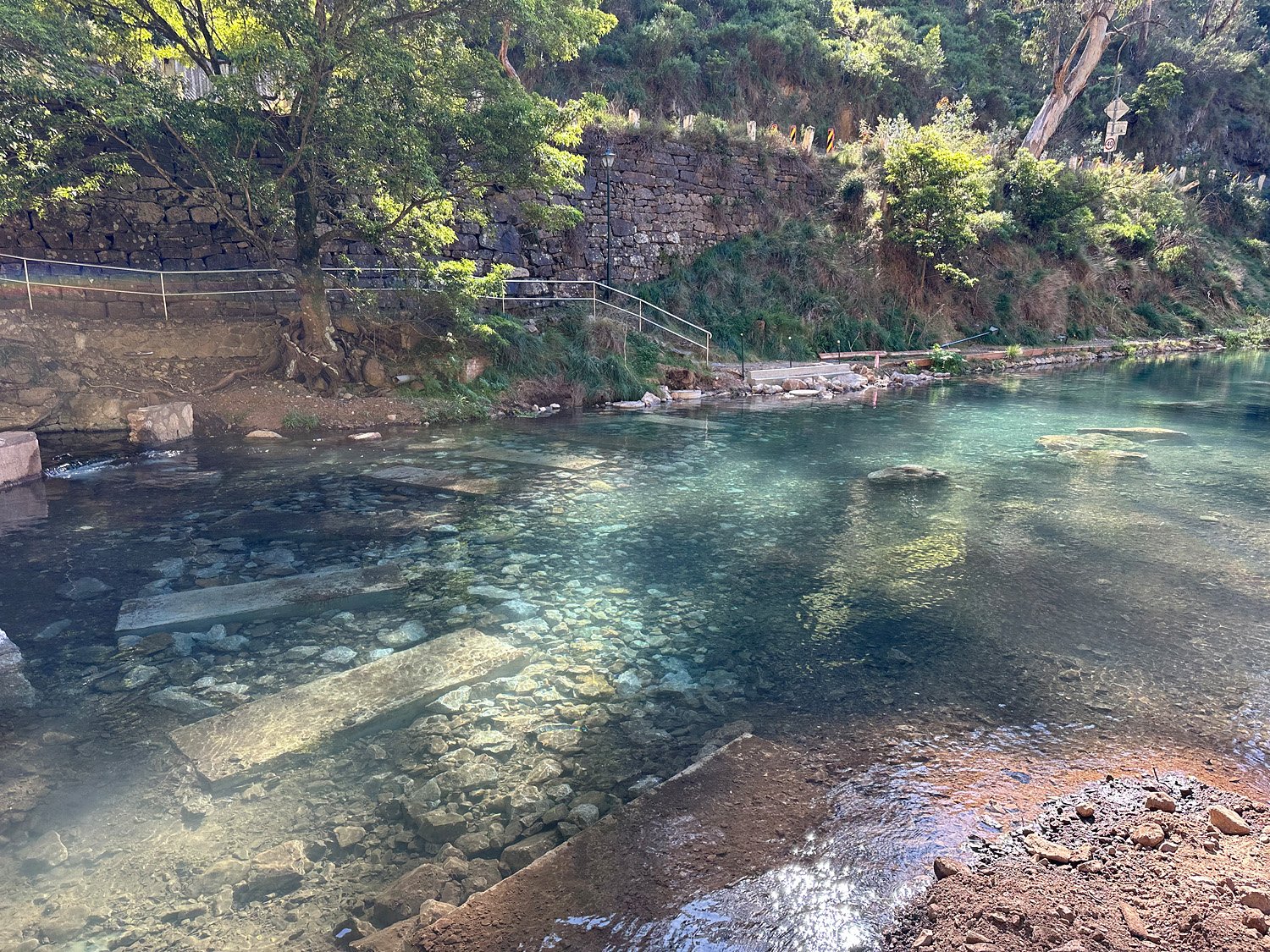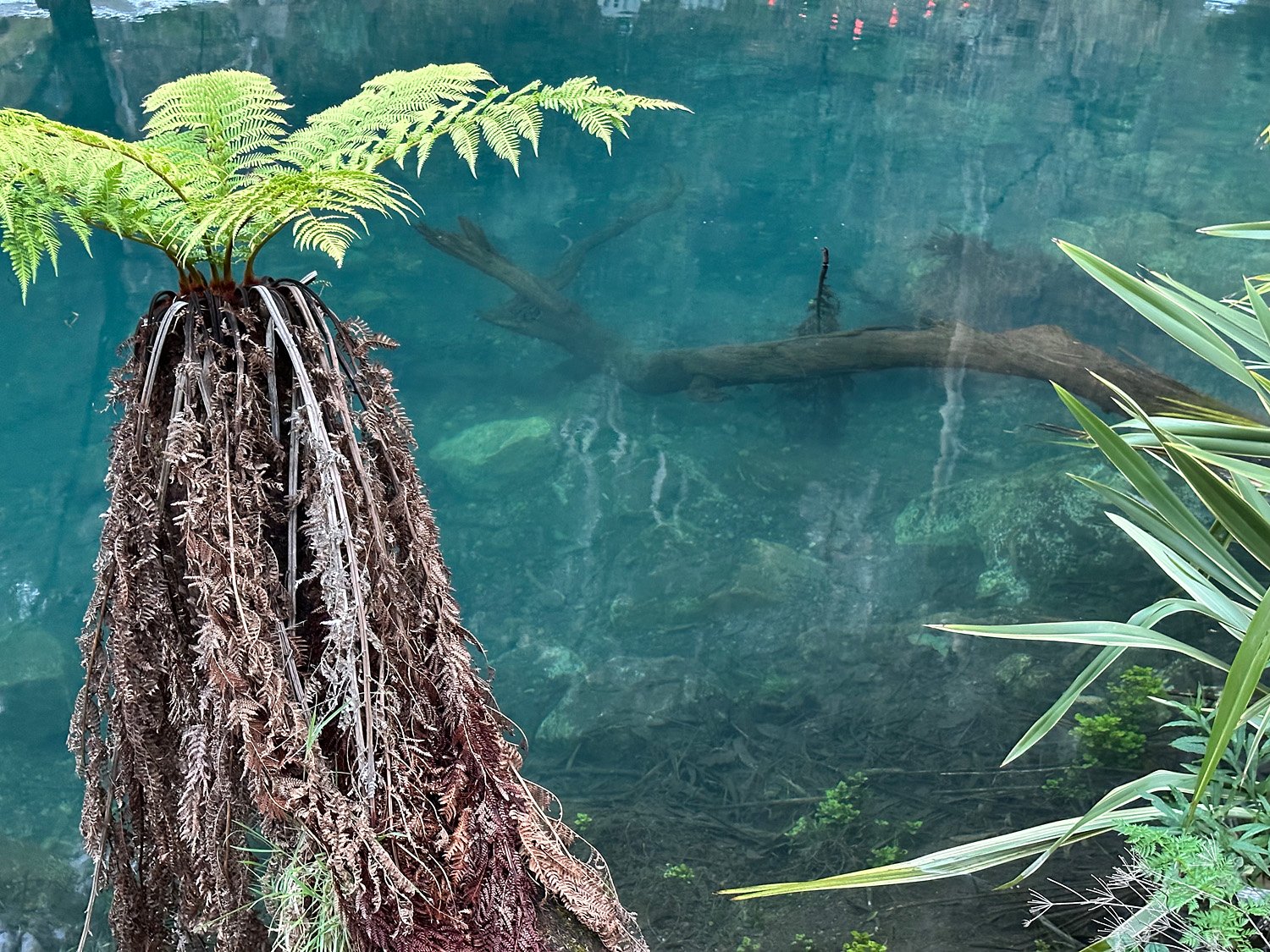Blue Lake: Conservation and Restoration
Jenolan’s iconic Blue Lake has been a feature at Jenolan since the Jenolan River was dammed to form the lake in 1908. The Blue Lake is a destination in its own right, with its deep blue mineral waters, tree-lined banks and, of course, the chance to see a Platypus.
Fire burnt through a large part of Jenolan during the Black Summer bushfires of 2019-2020, followed by two massive floods in 2020 and 2021. Hillsides, bare after the fire, eroded or even collapsed with the rain, filling the Blue Lake with debris and destroying platypus habitat.
The Blue Lake had to be excavated twice in order to restore it to its previous state. Excavation was done by Soil Conservation Service, whose careful work helped to prepare the lake for the return of our platypuses. Work included delicate excavation of banks with known platypus burrows or shelters, and construction of a ‘waterbug nursery’; rocks of various sizes were laid at the shallow end of the lake to encourage a diversity of species and provide a sheltered area for recolonisation (see our story on Waterbug Hotels for more on this).
The Blue Lake now has its remarkable blue colour back, but habitat restoration is still in progress. Revegetation plans include native vegetation plantings with hardy local natives like River She-oak and Lomandra to stabilise banks, prevent erosion and provide shade as well as cover for platypuses. When restoration and our new boardwalk are complete, the Blue Lake will once again be habitat for platypuses, waterbirds, turtles and frogs, and a beautiful place to relax and explore.

